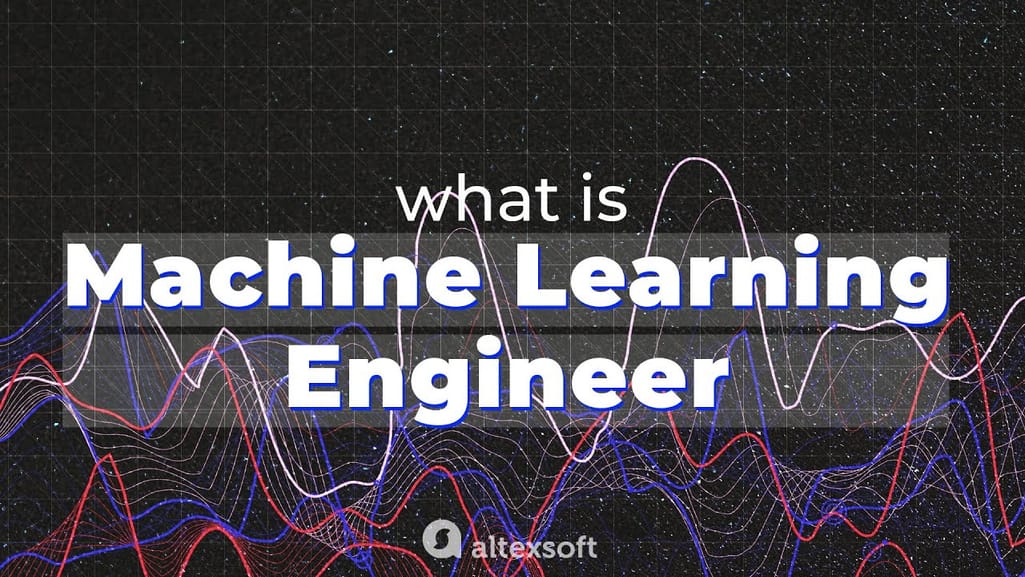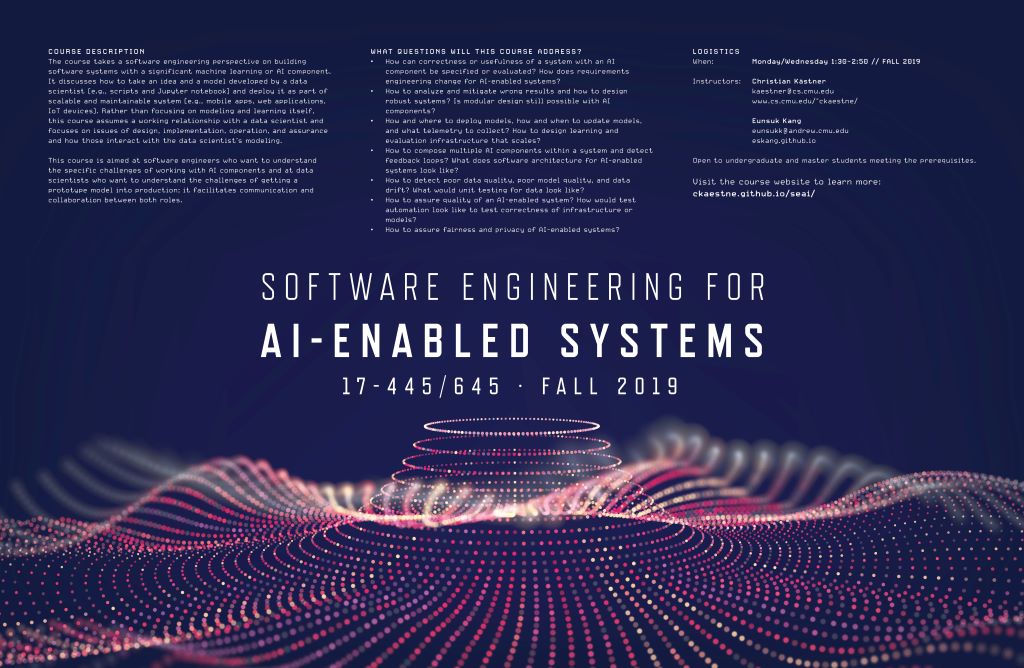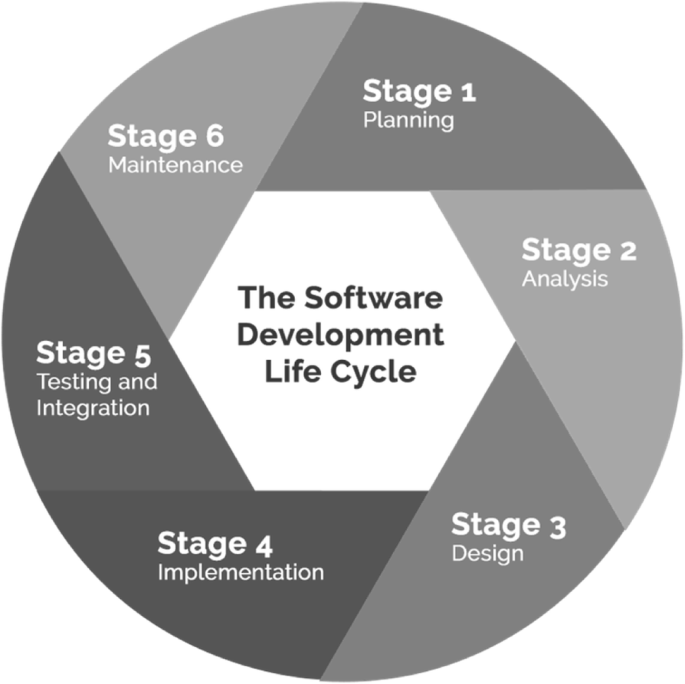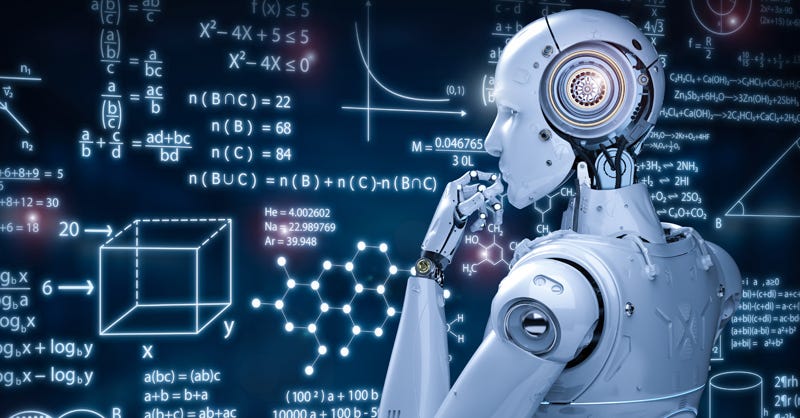All Categories
Featured
Table of Contents
- – 7 Easy Facts About Certificate In Machine Lear...
- – Not known Details About What Do Machine Learni...
- – The Buzz on Llms And Machine Learning For Sof...
- – Some Known Factual Statements About How To Be...
- – Some Known Details About 🔥 Machine Learning...
- – What Does What Do I Need To Learn About Ai A...
- – Excitement About How Long Does It Take To Le...
Some individuals think that that's dishonesty. Well, that's my whole career. If somebody else did it, I'm mosting likely to use what that individual did. The lesson is putting that aside. I'm compeling myself to analyze the possible remedies. It's more concerning taking in the web content and attempting to use those ideas and less concerning finding a collection that does the job or finding someone else that coded it.
Dig a little deeper in the math at the start, so I can develop that structure. Santiago: Finally, lesson number 7. This is a quote. It states "You have to understand every detail of a formula if you wish to utilize it." And afterwards I claim, "I believe this is bullshit advice." I do not believe that you have to recognize the nuts and bolts of every formula prior to you use it.
I've been utilizing semantic networks for the longest time. I do have a sense of exactly how the gradient descent functions. I can not discuss it to you now. I would certainly have to go and inspect back to in fact obtain a far better instinct. That doesn't mean that I can not solve points making use of neural networks? (29:05) Santiago: Attempting to force individuals to think "Well, you're not mosting likely to be effective unless you can clarify every solitary information of how this functions." It returns to our arranging instance I think that's simply bullshit suggestions.
As an engineer, I've functioned on numerous, numerous systems and I've made use of numerous, numerous things that I do not recognize the nuts and screws of just how it functions, even though I comprehend the effect that they have. That's the final lesson on that particular string. Alexey: The amusing thing is when I think of all these collections like Scikit-Learn the formulas they utilize inside to apply, for instance, logistic regression or another thing, are not the very same as the formulas we research in device knowing courses.
7 Easy Facts About Certificate In Machine Learning Described
So even if we attempted to find out to obtain all these essentials of machine discovering, at the end, the formulas that these libraries use are different. Right? (30:22) Santiago: Yeah, definitely. I think we require a whole lot much more materialism in the market. Make a whole lot even more of an effect. Or concentrating on delivering value and a little bit less of purism.

By the method, there are two various courses. I normally speak to those that intend to function in the sector that wish to have their influence there. There is a course for researchers which is totally various. I do not dare to talk concerning that because I don't know.
Right there outside, in the industry, pragmatism goes a long way for sure. Santiago: There you go, yeah. Alexey: It is an excellent motivational speech.
Not known Details About What Do Machine Learning Engineers Actually Do?
One of the things I wanted to ask you. First, allow's cover a couple of points. Alexey: Let's begin with core devices and frameworks that you require to discover to in fact transition.
I know Java. I understand SQL. I know just how to utilize Git. I know Bash. Perhaps I know Docker. All these things. And I become aware of artificial intelligence, it appears like an amazing thing. So, what are the core tools and structures? Yes, I watched this video clip and I obtain persuaded that I do not require to get deep into math.
What are the core devices and frameworks that I need to learn to do this? (33:10) Santiago: Yeah, absolutely. Terrific question. I believe, top, you should start discovering a bit of Python. Considering that you currently understand Java, I do not assume it's going to be a significant transition for you.
Not because Python coincides as Java, however in a week, you're gon na obtain a great deal of the distinctions there. You're gon na have the ability to make some progress. That's leading. (33:47) Santiago: Then you obtain particular core tools that are going to be used throughout your whole profession.
The Buzz on Llms And Machine Learning For Software Engineers
That's a collection on Pandas for data adjustment. And Matplotlib and Seaborn and Plotly. Those three, or one of those three, for charting and displaying graphics. You obtain SciKit Learn for the collection of machine learning formulas. Those are devices that you're going to need to be using. I do not recommend just going and finding out regarding them unexpectedly.
We can discuss details programs later on. Take one of those training courses that are going to start introducing you to some issues and to some core ideas of artificial intelligence. Santiago: There is a training course in Kaggle which is an introduction. I do not bear in mind the name, but if you go to Kaggle, they have tutorials there absolutely free.
What's good about it is that the only need for you is to understand Python. They're going to offer a problem and inform you exactly how to use choice trees to address that specific problem. I think that procedure is exceptionally powerful, since you go from no machine learning history, to understanding what the problem is and why you can not resolve it with what you understand right now, which is straight software program design techniques.
Some Known Factual Statements About How To Become A Machine Learning Engineer In 2025
On the other hand, ML designers focus on structure and deploying artificial intelligence designs. They concentrate on training versions with data to make predictions or automate tasks. While there is overlap, AI engineers handle even more diverse AI applications, while ML engineers have a narrower focus on artificial intelligence algorithms and their practical implementation.

Machine learning engineers concentrate on establishing and releasing maker understanding models right into manufacturing systems. They service engineering, making sure models are scalable, effective, and incorporated right into applications. On the other hand, data researchers have a wider role that consists of data collection, cleaning, exploration, and building versions. They are frequently in charge of removing understandings and making data-driven choices.
As companies increasingly embrace AI and equipment learning innovations, the demand for skilled professionals expands. Machine learning engineers function on advanced tasks, add to innovation, and have affordable wages.
ML is basically different from standard software program growth as it concentrates on teaching computer systems to gain from information, rather than programming explicit regulations that are carried out systematically. Uncertainty of end results: You are most likely used to creating code with foreseeable outcomes, whether your function runs as soon as or a thousand times. In ML, nonetheless, the results are much less certain.

Pre-training and fine-tuning: Just how these versions are educated on huge datasets and then fine-tuned for details tasks. Applications of LLMs: Such as message generation, belief evaluation and info search and retrieval. Papers like "Focus is All You Need" by Vaswani et al., which presented transformers. On-line tutorials and programs concentrating on NLP and transformers, such as the Hugging Face training course on transformers.
Some Known Details About 🔥 Machine Learning Engineer Course For 2023 - Learn ...
The capacity to take care of codebases, combine modifications, and settle problems is equally as important in ML development as it remains in standard software application projects. The skills developed in debugging and screening software application applications are extremely transferable. While the context may change from debugging application reasoning to recognizing issues in information handling or version training the underlying principles of systematic investigation, theory screening, and repetitive refinement coincide.
Maker understanding, at its core, is heavily reliant on stats and likelihood concept. These are critical for understanding exactly how algorithms learn from data, make predictions, and evaluate their efficiency.
For those curious about LLMs, a thorough understanding of deep discovering styles is helpful. This consists of not only the technicians of neural networks but likewise the design of certain designs for different use instances, like CNNs (Convolutional Neural Networks) for picture processing and RNNs (Frequent Neural Networks) and transformers for sequential information and all-natural language processing.
You must understand these concerns and discover techniques for identifying, minimizing, and communicating about predisposition in ML models. This consists of the possible effect of automated decisions and the honest implications. Lots of versions, specifically LLMs, need significant computational resources that are frequently supplied by cloud systems like AWS, Google Cloud, and Azure.
Structure these skills will certainly not only facilitate an effective shift right into ML yet likewise ensure that designers can add effectively and properly to the improvement of this dynamic field. Concept is necessary, but nothing beats hands-on experience. Begin working on projects that enable you to use what you have actually discovered in a sensible context.
Build your tasks: Start with straightforward applications, such as a chatbot or a text summarization device, and progressively increase complexity. The area of ML and LLMs is swiftly progressing, with brand-new breakthroughs and modern technologies emerging consistently.
What Does What Do I Need To Learn About Ai And Machine Learning As ... Do?
Join neighborhoods and online forums, such as Reddit's r/MachineLearning or area Slack channels, to discuss ideas and obtain recommendations. Participate in workshops, meetups, and conferences to get in touch with various other experts in the area. Add to open-source jobs or write article concerning your understanding trip and projects. As you gain expertise, start trying to find opportunities to include ML and LLMs right into your work, or look for brand-new duties concentrated on these technologies.

Prospective use cases in interactive software application, such as recommendation systems and automated decision-making. Understanding uncertainty, fundamental analytical procedures, and possibility distributions. Vectors, matrices, and their duty in ML algorithms. Mistake reduction strategies and slope descent described just. Terms like design, dataset, functions, tags, training, reasoning, and validation. Information collection, preprocessing strategies, version training, examination processes, and implementation factors to consider.
Decision Trees and Random Forests: Instinctive and interpretable versions. Assistance Vector Machines: Optimum margin category. Matching problem kinds with appropriate models. Stabilizing performance and complexity. Fundamental structure of neural networks: neurons, layers, activation features. Split calculation and forward breeding. Feedforward Networks, Convolutional Neural Networks (CNNs), Reoccurring Neural Networks (RNNs). Photo acknowledgment, sequence forecast, and time-series analysis.
Continual Integration/Continuous Release (CI/CD) for ML workflows. Design surveillance, versioning, and performance monitoring. Finding and resolving changes in version efficiency over time.
Excitement About How Long Does It Take To Learn “Machine Learning” From A ...

Program OverviewMachine learning is the future for the future generation of software program specialists. This training course offers as an overview to maker understanding for software program engineers. You'll be presented to three of the most relevant elements of the AI/ML technique; managed learning, neural networks, and deep discovering. You'll understand the distinctions between traditional shows and artificial intelligence by hands-on development in supervised discovering before constructing out intricate distributed applications with neural networks.
This program functions as a guide to machine lear ... Show Much more.
Table of Contents
- – 7 Easy Facts About Certificate In Machine Lear...
- – Not known Details About What Do Machine Learni...
- – The Buzz on Llms And Machine Learning For Sof...
- – Some Known Factual Statements About How To Be...
- – Some Known Details About 🔥 Machine Learning...
- – What Does What Do I Need To Learn About Ai A...
- – Excitement About How Long Does It Take To Le...
Latest Posts
How To Break Down A Coding Problem In A Software Engineering Interview
The Best Faang Interview Preparation Courses In 2025
How To Use Youtube For Free Software Engineering Interview Prep
More
Latest Posts
How To Break Down A Coding Problem In A Software Engineering Interview
The Best Faang Interview Preparation Courses In 2025
How To Use Youtube For Free Software Engineering Interview Prep